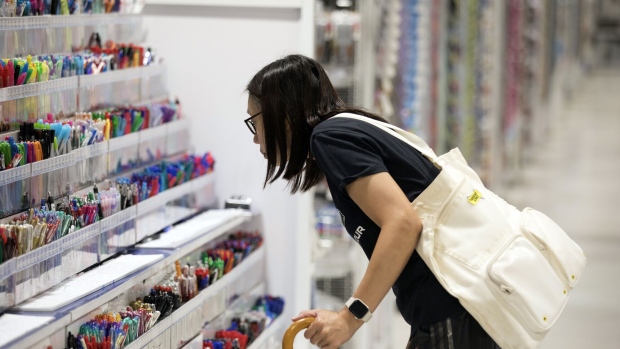Mar 28, 2023
Australian Inflation Eases, Bolstering the Case for Rate Pause
, Bloomberg News

(Bloomberg) -- Australian inflation decelerated more than expected in February, driven by an easing in housing construction costs, bolstering the case for the Reserve Bank to stand pat at next week’s policy meeting.
The currency and bond yields declined as the monthly consumer price indicator slowed to an annual 6.8% from 7.4% in January, government data showed Wednesday. That was the second straight month of cooling prices, reinforcing the RBA’s view that inflation peaked last quarter.
“Markets were already quite convinced with the story of an April pause, given what’s happening globally. But this just adds to the story,” said Jessica Ren, a strategist at Westpac Banking Corp. in Sydney. Recent comments from RBA policymakers had been implying “get ready for a pause.”
The CPI report is the final piece of the puzzle ahead of the central bank’s April 4 policy meeting as the board assesses the economic outlook after 3.5 percentage points of rate hikes since May. With the cash rate at 3.6%, consumer spending is also slowing, employment is showing signs of easing and business surveys are pointing to weaker conditions.
Wednesday’s data showed annual price growth for new dwellings was 13%, the lowest level in a year, as building material costs eased. Fuel prices rose 5.6%, the weakest reading in two years, and recreation and culture moderated as well, led by holiday travel and accommodation.
“The data showed that while the Australian economy is holding up, it has lost some momentum since late 2022 which is a sign that interest rate hikes are working,” said Diana Mousina, senior economist at AMP Capital Markets. “We see the RBA keeping the cash rate on hold next week.”
What Bloomberg Economics Says...
“February’s CPI data adds to evidence the economy is sagging under the weight of 350 basis points of rate hikes. Lingering inflationary pressure in rents and electricity prices are unlikely to stop the RBA from going on hold — and potentially cutting rates as soon as 4Q23”
— James McIntyre, economist
For full note, click here
For Treasurer Jim Chalmers, the report suggests light at the end of the tunnel as his time in office has coincided with the inflation breakout and the RBA’s most aggressive tightening cycle in a generation. He’s due to deliver a budget in May and has repeatedly stressed that it will be one of “restraint” to avoid fueling prices further.
Despite widespread expectations for a pause, the RBA is likely to retain a tightening bias given consumer-price growth remains well above its 2-3% target.
Policymakers and economists have urged caution in reading too much into the monthly inflation figures as not all items in the CPI basket are updated, meaning it has some deficiencies relative to the longstanding quarterly gauge. The ABS earlier this year paused its monthly trimmed mean series, saying the data wasn’t proving reliable.
The upshot is that not everyone is convinced that today’s reading cements a rate pause.
“A few months of softer indicators does not necessarily mean inflation is on a one way track down, as indicated by recent data in other developed countries,” said Cherelle Murphy, chief economist at EY. “With inflation remaining uncomfortably high, a resilient labor market, and business conditions sitting above pre-COVID levels, there is still a case for further rate hikes.”
--With assistance from Tomoko Sato, Matthew Burgess and Georgina Mckay.
(Adds comments from economists, updates market reactions)
©2023 Bloomberg L.P.





